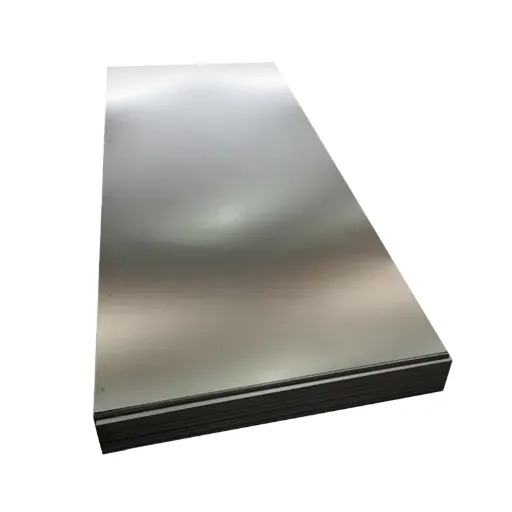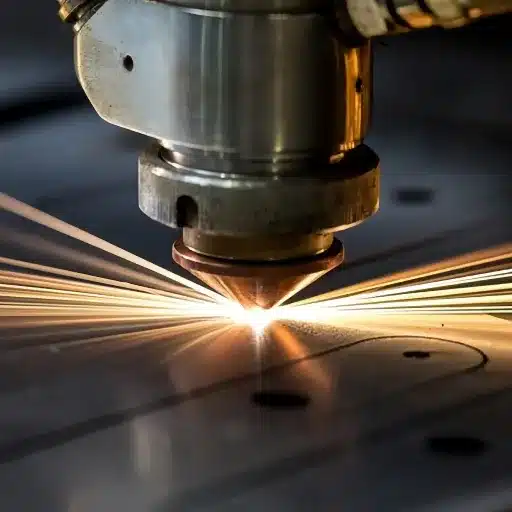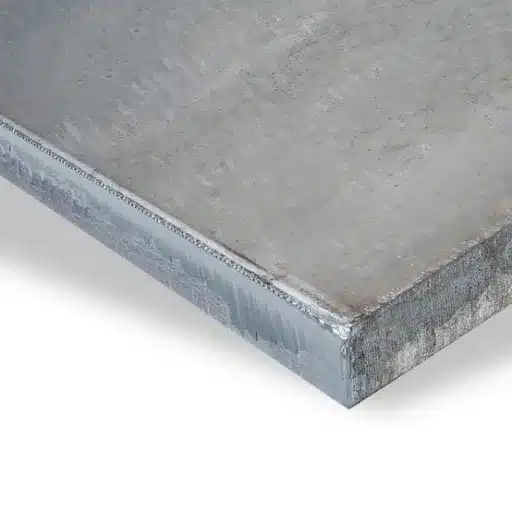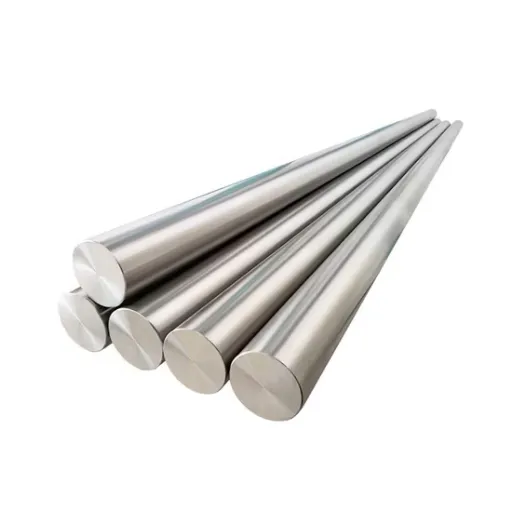When describing a car, the body panels are one of the primary considerations, both technically and aesthetically. They add to the car’s visual appeal while also serving safety, aerodynamics, and structure. All the more reason for anyone who loves cars, be they a mechanic, an enthusiast, or a casual motorist, to learn about the various body panels, their repairs, and the new technologies in their manufacture. This article takes you through the fascinating world of car body panels, with great detail laid on their purpose, maintenance, and the technological advancements in the industry. Buckle up as we ride through the core aspects of durability, style, and the evolution of automotive design.
Introduction to Car Body Panels

These outer shell parts are meant to protect the vehicle’s internal components and add to the car’s aesthetics. Standard panels include the hood, doors, fenders, trunk lid, and roof. They mainly protect the car from external factors such as weather, dust, or debris and form part of its aerodynamic performance. In current times, panels are made with sturdy yet lightweight materials such as aluminum, steel, or composites for strength and efficiency. The design and construction of these panels greatly affect the vehicle’s safety, aesthetics, and operational effectiveness.
What is a Car Body Panel?
Fancy terms for car body panels are external parts of a vehicle designed to protect and beautify it against various environmental forces. They incorporate a wide range of lightweight and durable materials such as aluminium, steel, or composite materials.
Importance of Body Panels in Vehicles
Car body panels are significant for a vehicle’s structure and to some degree for safety, aerodynamics, and aesthetics. These panels act as the main barrier protecting the vehicle from the elements, such as rain, wind, and debris, which can reduce vehicle life. Modern manufacturing builds body panels with light yet strong materials, such as high-strength steel, aluminum, or advanced composites. Such materials maintain low weights for vehicles, thus improving fuel efficiency and emission reductions. A recent report from MarketsandMarkets indicates that the automotive lightweight material market is hypothesized to increase from $75.8 billion in 2021 to $126.78 billion by 2026, thus reflecting the industry’s transition to designs focusing on sustainability and fuel efficiency.
Body panels are also involved in vehicle safety enhancement. For instance, crumple zones in body panels are designed to absorb collision impact energy, thus protecting the occupants by minimizing the impact force on the passenger cabin interior. Other advanced procedures, including hot stamping and laser welding, make these panels even stronger without adding extra weight. Finally, improved aerodynamics through precision engineering of body panels cut down drag and improve vehicle stability, which allows a much smoother ride at high speeds and reduces energy consumption.
The National Highway Traffic Safety Administration (NHTSA) breaks down the importance of body panels by backing them with data that corroborates that the better the structural elements, the fewer the fatalities recorded in an accident. Therefore, an ongoing effort to integrate new materials and design concepts into manufacturing for body panels continues by the manufacturers, aiming to strike a perfect balance between safety, efficiency, and sustainability.
Overview of Different Types of Body Panels
| Type of Body Panel | Description | Material Options | Key Functions |
|---|---|---|---|
| Hood Panel | Hinged cover over the engine compartment | Steel, Aluminum, Carbon Fiber | Protects engine from debris and weather |
| Bumper Panel | Front and rear impact-absorbing panels | Plastic, Foam, Steel | Reduces collision damage, absorbs impact |
| Fender Panel | Covers wheel arches and headlights | Steel, Aluminum, Plastic | Protects car body from debris and dirt |
| Header Panel | Connects headlights and grille | Plastic, Fiberglass, Sheet Metal | Structural support for front components |
| Lower Door Skin | Outer layer of car doors | Steel, Aluminum | Protects door from scuffs and debris |
| Wheel Arch Panel | Curved panel above wheels | Steel, Plastic | Shield car body from road debris |
| Quarter Panel | Rear side panel between the trunk and the door | Steel, Aluminum | Absorbs impact in minor collisions |
| Firewall | Separates engine and passenger areas | Steel | Protects passengers from engine heat |
Materials Used in Auto Body Panels
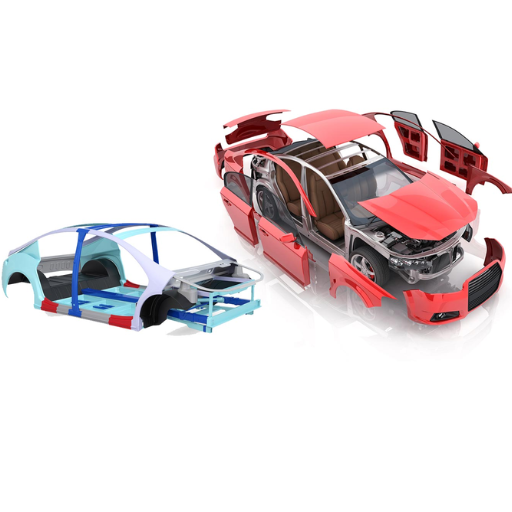
Auto body panels are engineered from different materials to ensure the utmost safety, durability, and ease of operation. The most common materials used include:
- Steel: Strong and somewhat cheap, a more traditional material offering higher crash resistance.
- Aluminum: Light yet strong, now much sought after for improving the fuel efficiency without compromising structure.
- Plastics and Composites: These are commonly utilized for bumpers and panels because they reduce weight while retaining flexibility and resilience.
- Carbon Fiber: Very high strength and extremely lightweight, and it is widely used in high-performance and luxury vehicles in the name of advanced efficiency and aerodynamics.
Depending on the application, these materials are chosen against other competitors, balancing cost restrictions, safety requirements, and sustainability considerations.
Traditional Materials: Steel and Aluminum
In vehicle manufacturing, strength, durability, and availability have long been synonymous with steel and aluminum. And they continue to fulfill crucial roles in constructing various automotive parts, balancing cost-efficiency and performance. The following discussions describe their uses and benefits in detail:
Owing to its strength and price, this type of steel is widely used in vehicle frames, chassis, and body panels. It provides high resistance to wear and tear and aids in easy fabrication.
- High-Strength Steel (HSS)
A newer enhancement to traditional steel, HSS is employed in safety-critical areas, such as crumple zones and reinforcements, to improve crashworthiness without adding too much weight.
- Galvanized Steel
This steel is coated with zinc and provides anti-rust and corrosion protection, making it suitable for the external surfaces of vehicles and structural components exposed to the elements.
- Cast Aluminum
Cast aluminum is lightweight and corrosion-resistant, so it is generally used in engine blocks, transmission housings, and suspension components to eliminate as much weight as possible without compromising structural integrity.
- Aluminum Alloys
These aluminum alloys are used extensively in body panels, wheels, and heat exchangers, which are the best compromise for strength versus lower density, resulting in improved fuel efficiency.
Steel and aluminum, together with modern enhancements in production techniques, make adequate options available to meet the stringent requirements that the automotive industry has for safety, green standards, and performance. Thus, steel remains an integral element in cost-effective manufacturing while catering to the new industrial trend of electrification and lesser environmental impacts.
Composite Materials in Automotive Applications
Composites, in general, are gaining popularity in automotive design and manufacturing because of their unique properties, such as their lightweight, high strength-to-weight ratio, and enhanced durability. One of the main reasons composites help with the sustainability and efficiency of today’s vehicles is that composites combine two or more distinct materials to form a new material of higher strength and better properties. The composite materials used in the automotive sector include:
- Carbon Fiber Reinforced Polymers (CFRP)
- Details: CFRP is mainly utilized for high-performance vehicles since it offers maximum strength and rigidity and is far lighter than metals.
- Data: CFRP can lower the weight of components by up to 50% compared to steel, thus improving fuel consumption and reducing carbon emissions.
- Glass Fiber Reinforced Polymers (GFRP)
- Details: GFRP is considered cheap, flexible, and is commonly used for automotive bodies and panels.
- Data: The materials offer a maximum weight-saving of 25%, making them an ideal choice for inexpensive commercial vehicles.
- Natural Fiber Composites
- Details: These composites are biodegradable and are made from renewable sources of fibers such as hemp, flax, and jute, which are aligned with sustainability goals.
- Data: Incorporating natural fibers in automotive interiors and trim can save up to 30% in material weight while reducing production costs.
- Thermoplastic Composites
- Details: They are lightweight and recyclable, with excellent thermal resistance and impact performance.
- Data: Thermoplastics are increasingly used in front-end modules and under-the-hood components because these components must withstand extreme temperatures.
- Hybrid Composites
- Details: Different fibers are combined in hybrid composites, such as carbon and glass, to get an optimal balance of properties, including strength, stiffness, and cost-efficiency.
- Data: They are mostly used for lightweight structural parts, which reduce the vehicle’s weight by 20%.
These composite materials set the automotive design on a new course and, more importantly, assist in weighing the shift toward electric and hybrid vehicles, where weight strongly impacts range and efficiency. Their adaptability, performance, and sustainability aspects have made them highly relevant to solving the challenges facing the modern automobile.
Advantages of Lightweight Materials
| Key Advantage | Description |
|---|---|
| Reduced Manufacturing Costs | Less material usage lowers production expenses. |
| Improved Sustainability | Reduces carbon emissions and material waste. |
| Enhanced Performance | Boosts efficiency in vehicles, aircraft, and sports equipment. |
| Material Savings | Conserves expensive or scarce materials. |
| Expanded Material Options | Enables use of diverse materials with better properties. |
| Fuel Efficiency | Lighter designs improve fuel economy in vehicles and aircraft. |
| Improved Ergonomics | Lighter products reduce fatigue and enhance usability. |
| Consumer Safety | Reduces risks in high-impact scenarios. |
| Transportation Savings | Lighter products lower shipping and packaging costs. |
Manufacturing Processes for Body Panels

Thin panels require advanced manufacturing techniques for strength, durability, and precision. Some basic formation methods are:
- Stamping: Thin sheets of metal or composite materials are shaped by high-pressure dies into panel designs. Due to its efficiency, this stamping process is best known for mass assembly.
- Injection Molding: The injection molding procedure involves injecting molten material into a mold to obtain lightweight, complex shapes for plastic and composite panels.
- Hydroforming: Hydroforming uses injurious pressurized fluids to shape metals into strong and seamless components, almost always required in intricate designs.
- Vacuum Infusion: This method is more common in composites and involves pulling resin into a sealed mold to form lightweight yet sturdy panels.
- 3D Printing: The new frontier in lightweight panel creation, 3D printing allows for rapid prototyping and custom designs with a low wastage rate.
Each method is selected depending on the material type, desired property, and production volume to optimize economics and performance.
Stamping Techniques for Body Components
My work with body component stamping is focused on the methods that provide precision and durability. Thus, no other method would come before progressive die stamping on complex in volume, whereas deep drawing will do better for the shape of complex three-dimensional components. Transfer stamping may also be a viable option, depending on the material and design associated problems, especially with larger components requiring multiple operations. This is how I try to achieve optimal production without compromising the quality.
Assembly Methods in Auto Body Production
Each modern-day auto body production exhibits a mixture of assembly techniques embracing cutting-edge robotics, automation throughout the process, and detailed human craftsmanship. These processes constitute the key platform for joining individual elements into a continuing, durable vehicle structure. Listed below are some of the primary assembly methods used in the industries, along with some pertinent data on their efficiency or efficacy.
- Robotic Welding
Arguably, robotic welding is the most extensively used process in auto body assembly because of its accuracy and repeatability. Industry figures show that in excess of 70% of automotive manufacturers advocate robotic welding systems for frame and panel assembly of cars worldwide, as they considerably reduce error margins. These welding systems join metal components using several methods, including laser welding and spot welding, to create the strongest and most durable bond.
- Riveting And Adhesive Bonding
Riveting and adhesive bonding have emerged with the growth of lightweight primes such as aluminum and composites. It can complement traditional welding, balancing strength with weight reduction. For instance, manufacturers have reported an improvement of up to 30% in joint fatigue resistance through the use of adhesive bonding while reducing actual vehicle weight-aiding the vehicle in fuel economy and performance.
- Bolt-on Assemblies
Doors, hoods, and panels are some vehicle parts that can be assembled through bolt-on techniques. This modular approach facilitates easier replacement and repair during damage, thus minimizing downtime and costs. Modular component assemblies have been observed to result in a 15-20% decrease in production times and provide valuable benefits to high-output manufacturing environments.
- Sealing and Weatherproofing
Advanced sealing methods ensure the durability of auto bodies. State-of-the-art sealants and insulation protect against corrosion, water penetration, and sound infiltration. Automated dispensing systems are often used in such applications to seal with high precision, attaining optimal coverage while minimizing wastage.
- Automated Quality Control
Numerous factories can be observed combining automated quality-control systems with assembly methods to maintain high production standards. Any defects detected by these AI and machine vision systems can do so at a vastly higher speed than manual inspection, thus ensuring that every vehicle meets its safety and performance criteria. The identification of defects by automated control systems is over 98%, thus considerably cutting the costs of reworks and recalls.
By utilizing these assembly methods, automotive manufacturing simultaneously attains the huge production demanded and enhances the quality and performance of the vehicle. Technological integration in such assembly methods reflects the industry’s focus on innovation and customer satisfaction.
Innovations in Manufacturing Technologies
I believe the most exciting innovations in manufacturing technologies involve automation and artificial intelligence. These developments aim to reduce production time, increase precision, and lessen errors. For example, machine-learning-driven automated quality control systems can detect real-time defects to guarantee a consistently high quality level. When implemented, such technologies reward both speed and reliability for the finished product needed to fulfill ever-changing consumer requirements and maintain its place in the market.
Repair Techniques for Car Body Panels

- Beauty Repair
Minor dents are often amenable to paintless dent repair, where the very paint is not disturbed while the metal is worked on from beneath. Larger dents, however, will require, for example, some body filler application, sanding, and painting to achieve a seamless finish.
- Scratch Removal
Surface scratches can be polished out by rubbing compounds, but deeper ones would require sanding, filling, and repainting to make the panel look as it was.
- Panel Replacement
Sometimes, panels are so badly damaged that they need to be completely replaced. This entails removing the damaged panel, installing a new one, fitting it properly, and finally painting it to match the vehicle’s color.
- Rust Repair
Rust would normally be removed, and the rusted areas would be replaced with new patches of metal. Sealing and painting would follow to prevent further manifestation of rust.
- Straightening
Some warped panels or frames may have to be straightened using presses or pullers, with checks on alignment to ensure that the panel and vehicle remain true to form in terms of structural integrity.
These services enhance durability, appearance conservation, and safety standards.
Common Repair Methods for Dents and Scrapes
Repairing dents and scrapes has progressed considerably in the recent era, providing efficient, economical, and high-quality solutions. Let’s put under review some of the most used techniques available today, ending with some details and insight into newer methods:
- Paintless Dent Repair (PDR)
PDR is very much valued for its speed and eco-friendliness. This method uses special instruments to massage the dented area from behind the panel and get it to the shape it was meant to be without repainting it. Experts say that PDR reduces repair cost by almost 60 percent compared to traditional methods, and manufacturers’ fumes finish until the priced-out option was chosen. Thus, the method works best with minor dents without damaged paint.
- Application of Body Filler
For deep dents or scrapes, where the metal panel is heavily damaged, the preferred option has been to use body filler. The affected area is first sanded down to eliminate rust or loose paint. Then the filler goes into operation to level the surface. Once set, the surface is sanded to a smooth finish and painted to match the remainder of the vehicle. An estimate suggests filler might be used in 30 percent of moderate to severe body repairs performed at a normal auto body shop.
- Heat and Cold Treatments
A kind of temperature manipulation is preferred for more minor dents or for panels with flexible materials. It causes dents by heating and cooling the metal rapidly using compressed air or CO2. The big advantages are speed and the ability to keep repairs less invasive, with about an hour used in most cases.
- Touch-up Paint and Clear Coat Repairs
Touch-up paint kits are a cheap and easy fix for deep clear coat scratches. The affected area is lightly buffed, and the touch-up paint is applied, sealing it off with the clear coat, thus completing the finish. These touch-up kits have become increasingly popular, with a 15% increase in use since 2023, thanks to their DIY-friendly nature and easy access.
- Classic Replacement of Panels
When the damage is no longer repairable, such as extreme rust or large deformation, panel replacement is usually the best option. Nowadays, it is faster to select and fit replacement panels, thanks to technological advancements involving 3D measuring and CAD modeling. Though this approach could be problematic in terms of repair time and cost, it remains the best option for retaining structural integrity and safety standards.
- Robotic Repair Systems
The infusion of AI and automation brought forth robotic systems that could pinpoint and repair dents and scrapes. These systems use computer-aided detection tools to locate damage and perform repairs with minimal human input. The evaluation of robotic systems revealed that repair time is reduced by 25%, and accuracy increases by up to 40% in robotic applications.
When done correctly with modern methods, repair experts ensure that their method of restoration not only solves the aesthetic problem but also helps maintain the vehicle’s value and accessibility from the road. Always find a certified professional to consult about treatments for your particular damage.
Replacing Damaged Body Panels: A Step-by-Step Guide
| Step | Description |
|---|---|
| Identify Damage | Inspect panels for dents, rust, or misalignment. |
| Choose Panel Type | Decide between OEM or aftermarket panels. |
| Gather Tools | Collect wrenches, drills, adhesives, and safety gear. |
| Remove Old Panel | Disconnect components and carefully detach the panel. |
| Prep Mounting Area | Clean, sand, and apply rust-proofing agents. |
| Dry Fit New Panel | Align and adjust the panel before securing it. |
| Attach Panel | Use bolts, rivets, or welding to secure the panel. |
| Apply Sealant | Seal edges to prevent moisture and debris. |
| Paint and Finish | Prime, paint, and clear coat to match the vehicle. |
| Inspect Work | Check alignment, fasteners, and perform maintenance. |
Utilizing Fasteners and Other Fixings
Fasteners and other fixing methods come into the picture when structural strength and proper alignment of vehicle body panels are considered during automotive repair. Such fixings also allow a panel to be placed and removed to facilitate easier assembly or disassembly during future repairs and replacements. Here are five fasteners commonly used and their applications:
- Bolts and Screws
- Purpose: To fasten the body panels firmly to the vehicle frame or juxtapose them.
- Materials: Made usually of stainless steel or alloy to withstand durability requirements and resist corrosion.
- Data: Depending on the panel and vehicle, torque values are from 20 to 40 ft-lbs.
- Rivets
- Purpose: These usually make for permanent, high-strength connections in areas where access is limited.
- Materials: They are mostly aluminum or steel.
- Data: They can take a heavy tensile load, which makes them suitable for vehicle-repair situations that require really strong stability.
- Clips and Retainers
- Purpose: These are used for holding trim pieces, or interior panels, or light body panels.
- Materials: These can be plastic or metallic, depending on their application.
- Data: They are required for fast installation/dismantling, which greatly reduces repair time and cost.
- Studs and Nuts
- Purpose: Commonly used where alignment adjustment is necessary, such as in bumper support structures or fender panels.
- Materials: These are preferably high-strength steel, ensuring it remains a secure connection even when put under pressure.
- Data: Depending on specific application requirements, these can take loads ranging from 15 to 60 ft-lbs, depending on the application.
- Push Clips
- Purpose: A temporary fastening solution for lightweight panels or covers.
- Material: Wear-resistant Plastic.
- Data: Makes disassembling panels a simple job and thus speeds up vehicle maintenance work.
Upon identification and utilization of these fasteners, the technician can perform repairs that truly meet the quality standards set out by manufacturers and the aesthetics and functionality of the vehicle. Usually, the vehicle’s repair manual should be consulted to acquire knowledge pertaining to the recommended fasteners that will best suit any particular application.
The Role of Body Panels in Vehicle Safety and Aerodynamics
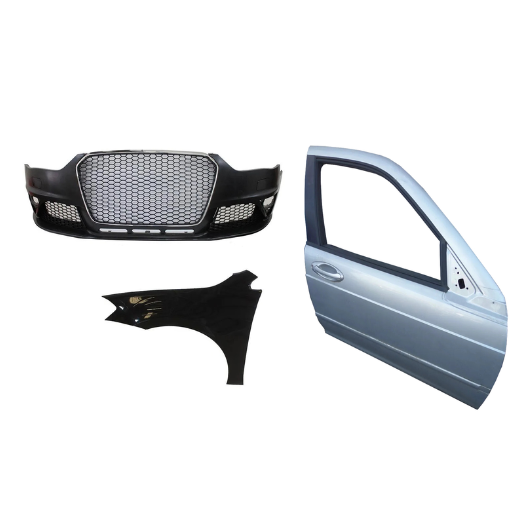
The body panels are significant in terms of the safety and aerodynamics of the vehicle. They absorb and dissipate the impact forces during collision, protecting the passengers by ensuring the vehicle maintains structural integrity. From an aerodynamics standpoint, the body panels are designed to cut through the air smoothly and improve fuel economy and performance. If properly aligned and maintained, the panels will provide the best safety and aerodynamic results-for the benefit of both the occupants and the vehicle.
How Body Panels Contribute to Crash Safety
Body panels are crucial in protecting car occupants from injury during collisions. Thanks to the ever-growing advances in automotive engineering, modern body panels are designed using materials such as high-strength steel, aluminum, and composites that impart the greatest impact absorption. Recent crash tests suggest that vehicles possessing lightweight but sturdy panels experience the least transfer of collision energies into the occupant cabin, making a passenger less susceptible to serious injuries.
One of the major developments is the engineering of crumple zones-crumple-zone areas of body panels arranged to deform in a predetermined manner upon impact while absorbing and dissipating kinetic energy to prevent excessive forces from reaching the passengers. For instance, the IIHS has found that vehicles that apply modern crumple zone technologies reduce deaths by as much as 25% in frontal crashes.
Other advances include more sophisticated side-impact protection through the body panels and side-impact beams. NHTSA reports that almost 25% of fatalities result from side-impact crashes. Reinforced panels and well-placed reinforcements considerably reduce intrusion to the passenger compartment, thus safeguarding the passengers from lethal injuries.
Material advances also contribute to crash safety. In body panel design, ultra-high-strength steels have enhanced energy absorption capacity while cutting down car weight to contribute to fuel economy. Research shows, for example, that cars built with the newest materials can resist forces of a collision some 20 percent greater than those of conventional steel.
These inventions, showing modern body panels, jointly ensure crash safety, enforce safety regulations, and upgrade a vehicle’s general performance. These are the grounds on which vehicles today are safer than they ever have been, guaranteeing unmatched accident protection.
Aerodynamic Benefits of Modern Body Designs
| Key Benefit | Description |
|---|---|
| Reduced Drag | Enhances fuel efficiency and top speed. |
| Improved Stability | Downforce increases grip and control at high speeds. |
| Better Fuel Economy | Less air resistance reduces energy consumption. |
| Enhanced Handling | Optimized airflow improves cornering and maneuverability. |
| Quieter Cabin | Streamlined designs minimize wind noise. |
| Extended EV Range | Aerodynamics maximizes battery efficiency in electric vehicles. |
| Active Aerodynamics | Real-time adjustments optimize performance and efficiency. |
| Sustainability | Lower drag reduces emissions and supports eco-friendly goals. |
| Advanced Materials | Lightweight composites improve shape and reduce weight. |
| Improved Aesthetics | Sleek designs combine functionality with visual appeal. |
Case Studies: Safety Features in New Cars
Based on my experience, great strides in safety innovation have been made in a modern vehicle setting. For example, several modern ADAS features, from lane-keeping assist to adaptive cruise control, are being heavily relied upon to prevent accidents. Among these, automatic emergency braking systems have proven essential in preventing rear-end accidents: unsafe situations are identified, and brakes are applied automatically. On the other hand, 360-degree-camera-equipped vehicles and blind-spot monitors increase situational awareness, which helps avert side collisions. With these features, besides very high crash test scores and sensor systems, safety continues to improve for drivers and passengers.
References
- Materials for Automobile Bodies
This book discusses materials used in automotive body structures and their applications.
Read more on Google Books - New Method of Car Body Panel External Straightening
A research paper on innovative methods for straightening car body panels.
Read more on Wiley Online Library - Optimizing Automotive Body Panel Materials
This article explores lightweight alloys for sustainable automotive performance.
Read more on Springer
Frequently Asked Questions (FAQ)
What is a car body panel and why is it essential for the vehicle body?
A car body panel refers to the exterior panels that comprise the vehicle’s body structure. These panels are crucial for the vehicle’s aesthetic appeal and structural integrity. They are designed to protect the internal components, enhance exterior styling, and ensure the car can withstand impacts and corrosion over time.
What types of body panels are commonly used in automotive body construction?
Common types of automotive body panels include the hood, doors, fenders, quarter panels, and trunk lids. Each panel can be made from various materials such as steel, aluminum, or fiberglass, depending on the vehicle’s make and model and the desired impact resistance and durability.
How can I identify rust or corrosion on my vehicle’s body panels?
Rust and corrosion can often be identified by visual inspections of the vehicle’s exterior body panels. Look for flaky or discolored patches, especially around wheel arches, inner fenders, and areas where water might accumulate. Promptly addressing these issues can prevent further damage to the car or truck body panel.
What is the process of replacing a damaged car body panel?
Replacing a damaged car body panel typically involves removing the old panel, preparing the area, and installing a new one. This can include welding or fastening the new panel in place, as well as finishing it to match the vehicle’s exterior styling. Depending on the vehicle, you may need to source OEM or aftermarket parts for the replacement body.
Are there specific body panels that are more prone to wear and tear?
Yes, certain body panels, such as the rear quarter panels, truck bed floor, and wheelhouse, are often more susceptible to wear and tear due to exposure to road debris and environmental elements. Regular maintenance and inspections can help catch issues before they require extensive repairs.
What materials are commonly used for exterior body panels?
Exterior body panels are typically made from materials like steel, aluminum, and plastic. Steel panels are favored for their durability and impact resistance, while aluminum is lighter, and plastic can be used for cosmetic elements. The choice of material often depends on the vehicle’s design and intended use.
Can I customize my vehicle’s body panels?
Yes, customization of vehicle body panels is quite common among automotive enthusiasts. Custom body panels can enhance the vehicle’s exterior styling and improve aerodynamics. Many suppliers offer aftermarket options that allow for unique designs and finishes tailored to individual preferences.
What are the benefits of using OEM vs. aftermarket body panels?
OEM (Original Equipment Manufacturer) body panels are designed to match the exact specifications of your vehicle, ensuring proper fit and finish. Aftermarket panels may offer more variety and potentially lower costs, but they might not always provide the same level of fit or quality. It’s essential to weigh the pros and cons based on your restoration project needs.


